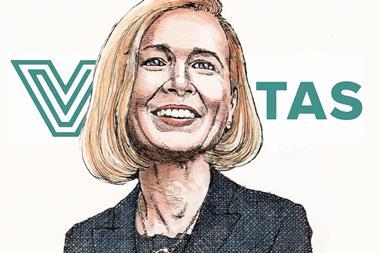EUROPE - New statistical portfolio risk modelling techniques JPMorgan Asset Management (JPMAM) is urging its institutional clients to deploy show pension funds may be underestimating potential losses to the tune of hundreds of millions of pounds - but also that they can reduce this risk with more allocations to alternative investments.
However, the new models also show that improved risk-adjusted returns from alternatives are limited, and that the typical US endowment is probably over-exposed.
JPMAM is currently visiting some of its European clients to run their current portfolios - and their plans for future asset allocation changes - through its new models, which aim to provide more accurate conditional value-at-risk measures (CVaR) by taking account of the non-normality of the return distributions of most asset classes.
The model takes account of serial correlation and fat left tails for each asset class, as well as unstable correlations between asset classes.
Serial correlation is the tendency of one period's return to correlate with another period (a form of non-randomness). By 'unsmoothing' this, the model arrives at higher measures of volatility for some asset class - particularly hedge funds, private equity and real estate.
Taking account of fat left tails with extreme value theory ensures the probability of extreme losses in any one asset class is not underestimated (every asset class apart from commodities exhibits this tail risk).
And by using copula theory, the model ensures it takes account of the fact correlations between asset classes can converge and diminish diversification benefits - as they did in 2008, when, for example, UK equities went from being 32% correlated with UK bonds to 68% correlated.
Taking a £1bn portfolio with 65% in global equities, 30% in bonds and 5% in real estate, 10-year CVaR95 (the average real loss in the worst 5% of cases from 10,000 Monte Carlo simulations at the end of 10 years) would be £243m, based on inputs using normal distributions.
The same 10-year CVaR95 using JPMAM's adjustments for non-normality would be £286m.
The model, therefore, suggests a CIO using normally distributed returns might be underestimating worst-case real loss, even over a 10-year time horizon, by 18%.
Karin Franceries from the Strategic Investment Advisory Group at JPMAM, said: "Something that really catches the attention of a CIO at a pension fund when we show them this is the fact these are real losses, adjusted for inflation.
"So thanks to risks incurred through exposure to assets with non-normal return distributions, you may not even preserve capital over a period as long as 10 years. We are talking about the worst 5% of outcomes here - not the worst 0.5% - and that is a significant probability."
Adjusting asset allocation and then running it through the model again reveals worst-case losses may be reduced with the addition of alternative investments, with only a small reduction in return.
The 65/35/5 equity/bond/alternatives portfolio would exhibit an expected annualised return of 7.6%, with 10.6% volatility and 10-year CVaR95 of £286m, giving a return per unit of CVaR95 (a kind of Sharpe ratio for worst-case risk) of 0.16. Take 5% from equities and put it into commodities and hedge funds and the expected return drops to 7.5%, but the CVaR95 also drops, to £258m, delivering 0.17 units of return per unit of CVaR. Make that a 10% shift and the return per unit of CVaR jumps to 0.19.
Adding commodities means taking some risk away from an asset class with non-normal left tail risk and putting it into one with normal left tail risk. But the hedge funds, which in aggregate also exhibit fat left tails, help as well.
"Because hedge funds are less volatile, the fat tails are less extreme than those experienced in equities," said Franceries. "And there are some moments where you will have true diversification - losses in equities offset by gains in hedge funds."
She observed that focusing the hedge fund portfolio on global macro, which tends to exhibit more right tail risk, delivers a "much stronger" impact on the whole portfolio's left tail risk.
This diversification of tail risk explains how moving risk from low-risk, low-return fixed income into higher-risk alternatives can also improve the return per unit of CVaR.
Moving 10% from fixed income to infrastructure and hedge funds pushes expected return from 7.6% to 8% and volatility from 10.6% to 10.9%, but 10-year CVaR95 still drops from £286m to £280m, delivering 0.18 units of return per unit of CVaR.
"Even though both hedge funds and infrastructure have fat left tails, the diversification you get from these two asset classes is such that you don't get added left tail risk," said Franceries.
Circumstances of individual pension funds vary, but all other things being equal the portfolios above are not optimised for return per unit of CVaR.
Franceries said that that would involve an allocation to alternatives of as much as 30%.
"But then it becomes unrealistic for a pension fund," she added.
Moreover, because improvements in CVaR appear to diminish and ultimately be limited, while returns continue to reduce as diversifying assets are added, there is a point at which the return per unit of CVaR peaks and then reverses.
Again, deploying CVaR with non-normal inputs may be important here because risk measures reliant on volatility inputs alone - such as the Sharpe ratio - may show continued improvement beyond the point at which return per unit of CVaR does.
Franceries said: "For our typically allocated US endowments, we are actually advising they bring their allocations to alternatives down."












No comments yet